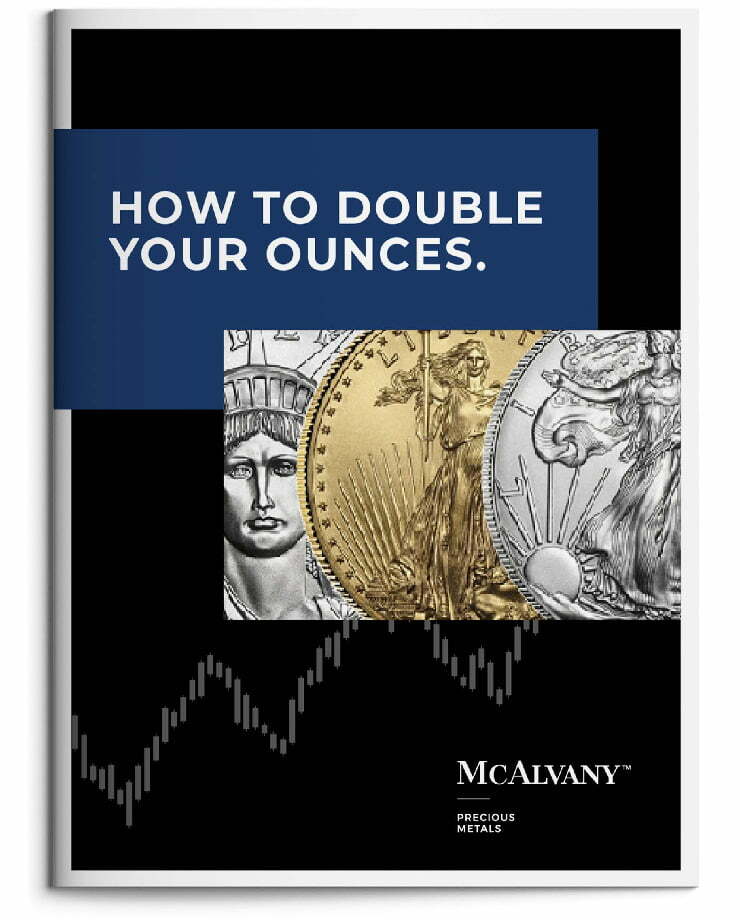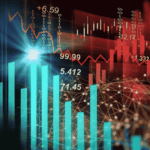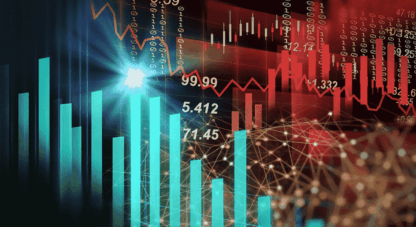The McAlvany analysts continue to emphasize that, whatever the societal and governmental effects of MAGA might be, the fiscal effects appear to be inadequate to overcome (or might exacerbate the effects of) decades of debt abuse, overspending, misspending, and policy errors. This, of course, has massive implications for the greater Trump agenda, but the analysts focus primarily on the economic and financial aspects of the current dilemma.
Trump, of course, has overcome the odds on many occasions, but reality tends to bring winning streaks to an end at some point. Will that happen here? If so, will it happen sooner or later? The evidence cited in the publications summarized below is not presented as the last word on the subject, but it is powerful and indicative–and extremely revealing. Be sure to factor it into your financial plans for the future.
Key Takeaways:
- AI or ay yai yai?
- Froth and excess everywhere
- Hawk talk masks dovish reality
- This ’20s show is looking like that ’70s stagflation show
The McAlvany Weekly Commentary: “Sure Bet” AI Now Not So Sure
David and Kevin dive into what they call a shifting “AI narrative,” arguing that the once “sure bet” of artificial intelligence is colliding with the hard limits of physics, finance, and infrastructure. David notes that the dream of boundless machine intelligence is meeting a wall of energy constraints—massive gigawatt requirements, strained grids, and water-hungry data centers—turning the “AI revolution” into what he calls a potential “household energy nightmare.” From there, the discussion shifts to parallel narrative cracks: a bond market burdened by runaway U.S. debt, deficit spending normalized to the point of absurdity, and Wall Street’s surprising pivot from bonds toward gold (the new “20% solution” in a 60/20/20 portfolio). Kevin and David also revisit the equity market’s frothy valuations and dangerously narrow breadth—AI again at the center—suggesting the end of a cycle cloaked in optimism. With humor and sober realism, they frame 2026 as a year that may test investors’ faith in both machines and markets while reaffirming the age-old value of hard assets and clear-eyed thinking.
Credit Bubble Bulletin: Last Gasp
Doug’s latest weekly wrap-up opens with a bang—speculative froth everywhere, from soaring Mag-7 tech stocks to surging emerging-market equities and even a $114 pop in gold—all signs, he warns, of “liquidity excess” nearing its last gasp. Monday’s exuberance, he writes, gave way by week’s end to fear and deleveraging, as bitcoin tumbled, AI darlings lost altitude, and bank shares faltered. Doug ties it all to a historic global liquidity bubble pumped up by cheap leverage and euphoric speculation—from hedge fund repo trades to Japan’s yen carry flows—that now masks deep structural cracks in credit and sovereign finance. He flags mounting fragility in the AI and crypto manias, ballooning private-credit risk, and the eerie complacency of those insisting “there is no bubble.” Along the way, he adds to the mix widening stress in junk bonds, subprime autos, and private credit valuations, set against faltering currencies and rising global yields. In Doug’s view, Monday’s fireworks were no victory lap but a warning flare—the speculative “terminal phase excess” before the oxygen runs out.
Hard Asset Insights: The Next Regime Playbook
Morgan highlights a market jittery from whiplash-inducing volatility and fresh “hawk talk” out of the Federal Reserve. Quoting Kansas City Fed President Jeffrey Schmid’s skepticism toward further rate cuts, Morgan notes that markets swiftly dialed back their expectations—but he’s not buying the hawkish veneer. In his view, the monetary reality still points toward more easing, higher inflation, and what he calls a “monetary regime change,” ultimately friendly to gold and other real assets. He underscores how central banks, particularly China’s, are quietly but aggressively buying gold as part of a broad de-dollarization push—a sign that the global financial order may be quietly tilting eastward. Morgan connects such moves to the broader theme of accelerating currency debasement—an environment that historically rewards tangible assets. Wrapping up, he shares the week’s scorecard: gold up 2%, silver over 4%, the miners up more than 6%, and the dollar drifting lower. Beneath the data, he hints, the next regime in money and markets is already revealing its playbook.
Golden Rule Radio: Stagflation Signals Emerging
On this week’s GRR, Tory, Rob, and Miles zero in on signs that the U.S. economy is slipping toward stagflation, where growth stalls even as inflation and job worries persist. The hosts note that gold is up 5.3% to around $4,200 and silver has leapt more than 10%, cutting the gold-to-silver ratio below 80:1—an unusually strong showing for the entire precious metals complex (platinum and palladium are also up over 4%). What’s odd, they observe, is that nearly everything—stocks, metals, even the dollar—rose together, upending old rules of diversification and hinting at deep-running liquidity distortions. Drawing on Hedgeye’s “Quad Three” model, they suggest the U.S. could enter a true stagflationary phase within months as consumers struggle with debt and job insecurity. The conversation circles back to money creation and M2 expansion as the fuel behind both inflation and asset gains, urging investors to recognize that “printing” props up prices but can’t create growth. Their advice? Stay calm, accumulate ounces strategically, and remember that amid market noise and political churn, hard assets tend to whisper the truth most clearly.















